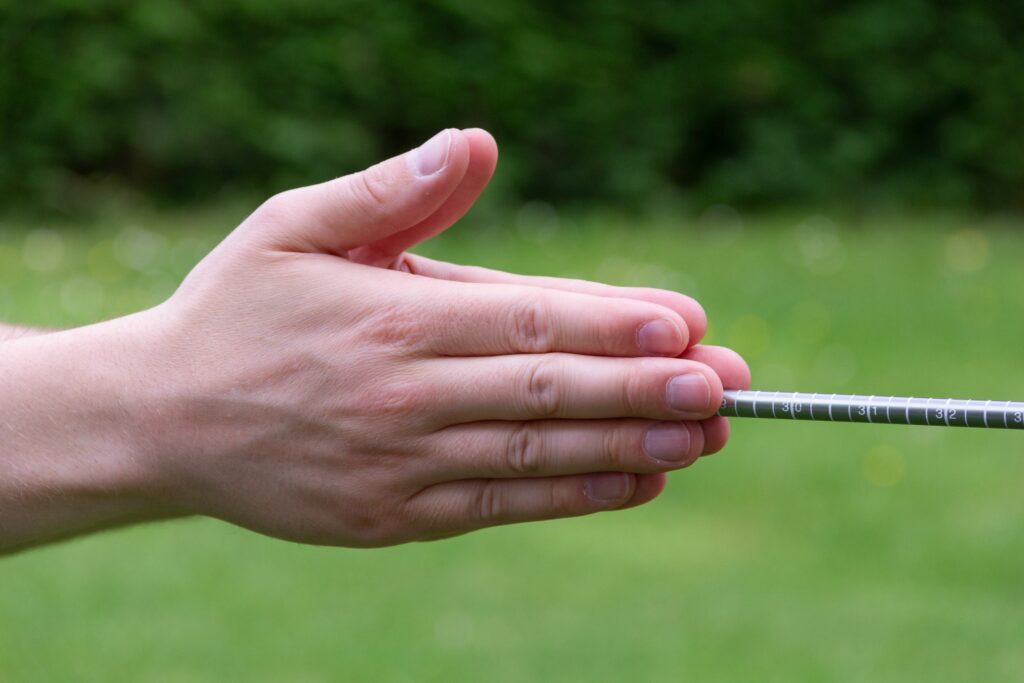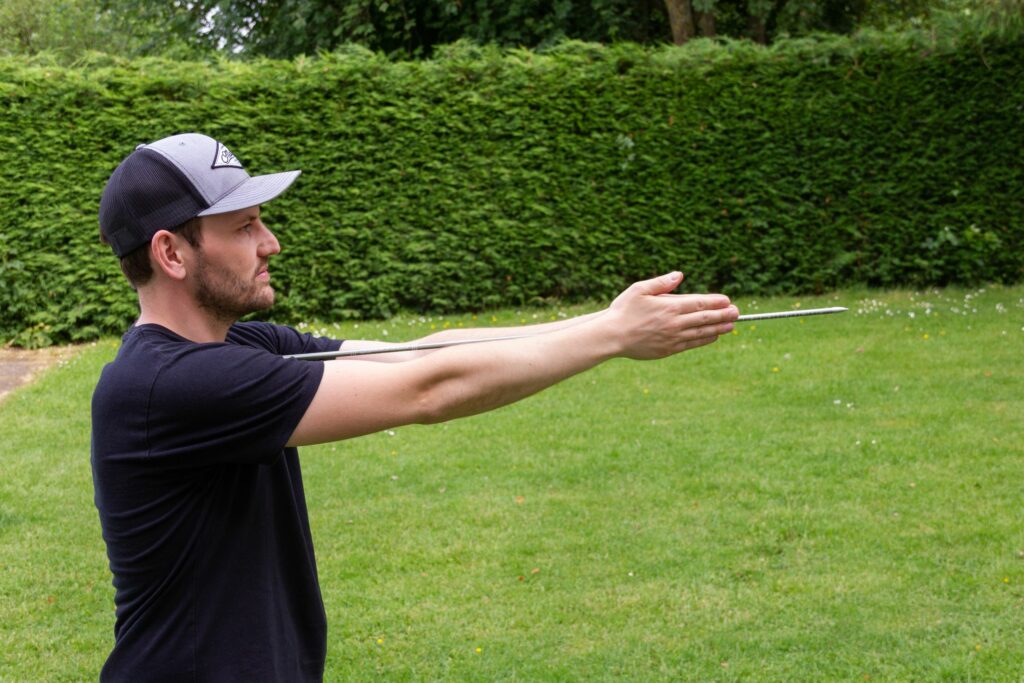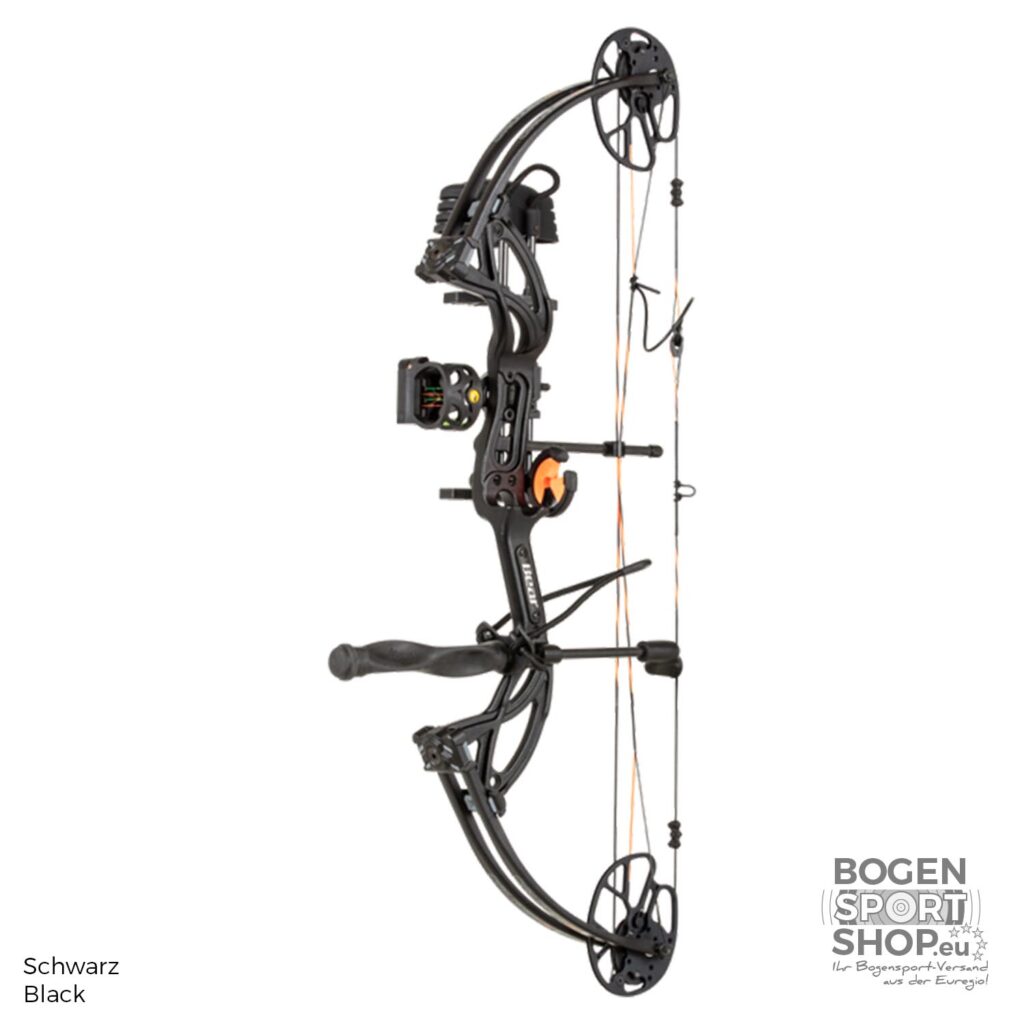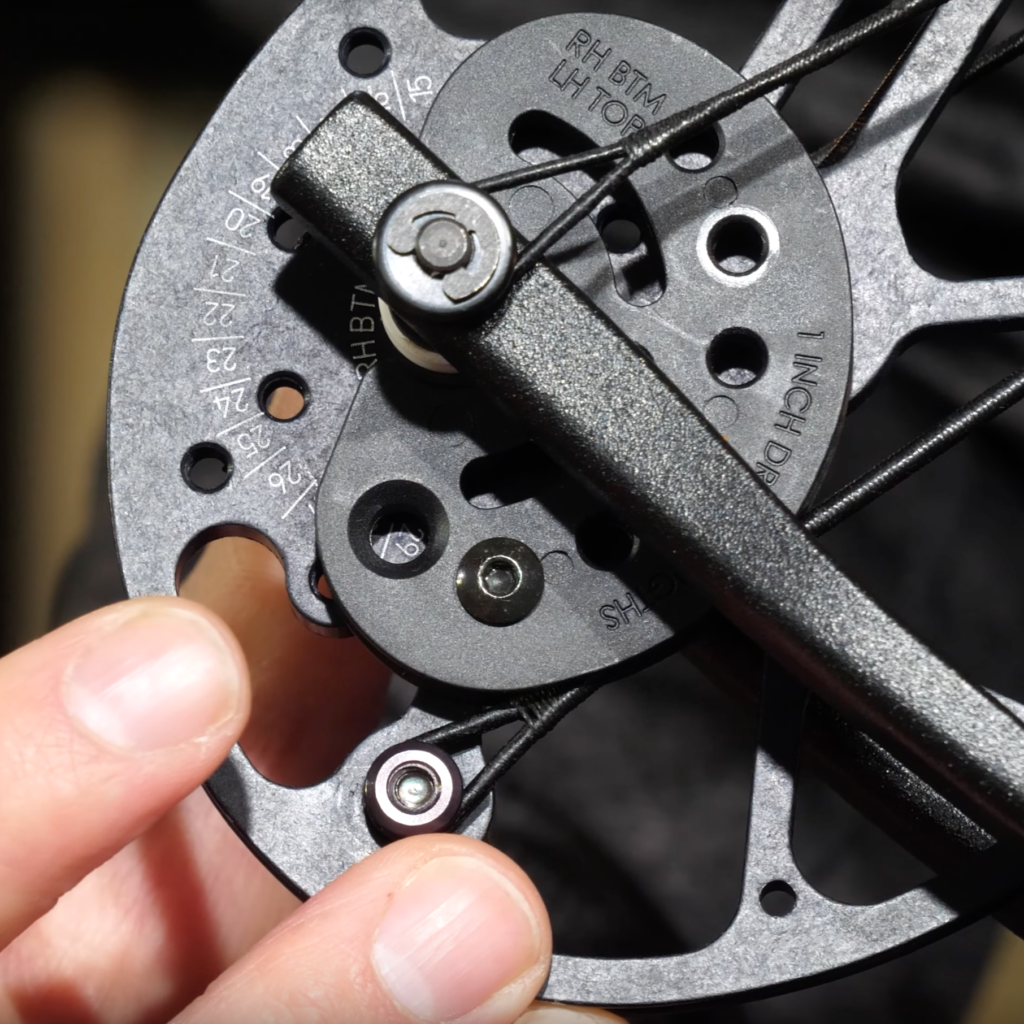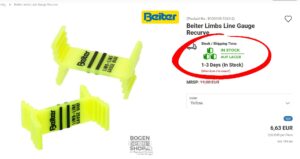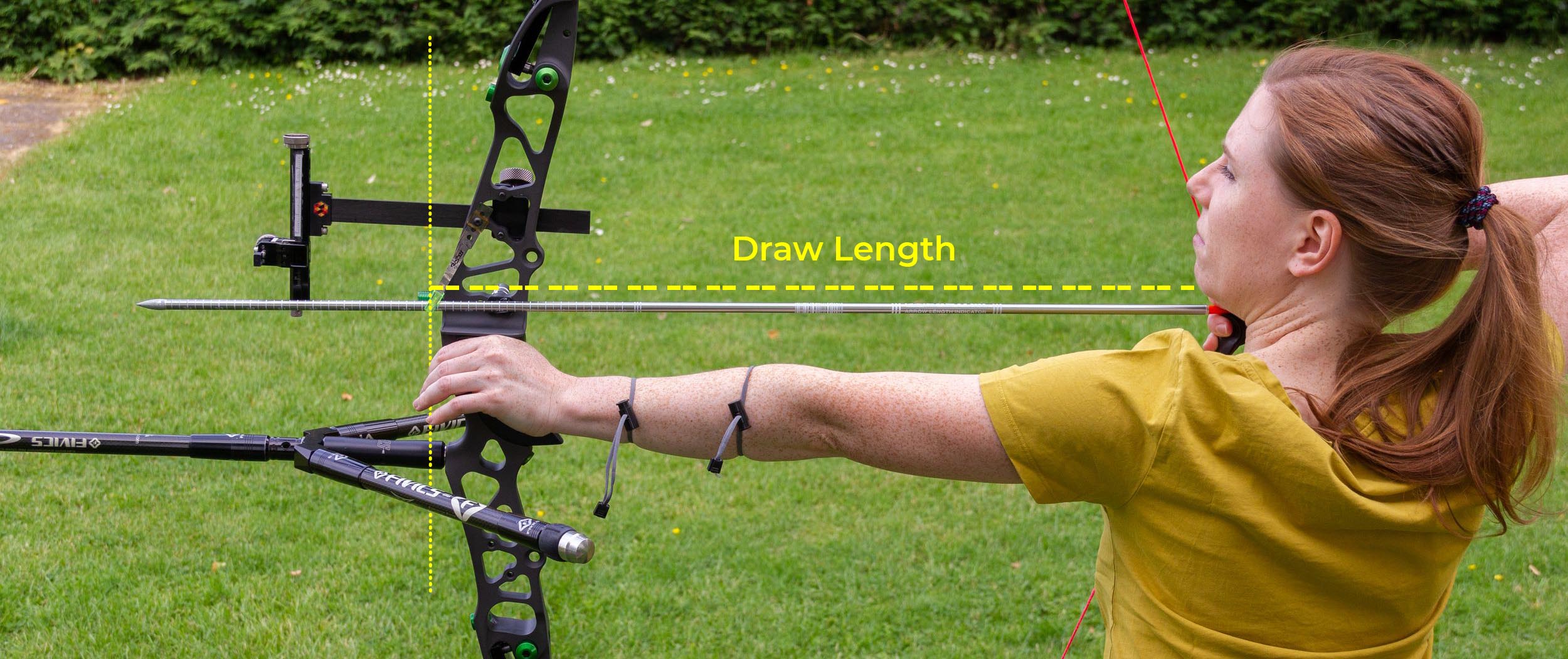
Table of Contents:
- Determine Draw Length Without the bow
- Determine Draw Length With the bow
- …and what about compound archers?
One of the first things coaches want to know about their archery students, for example in an archery club, is their draw length. That is, the total length of the arrow, including the point and the nock. This sounds obvious now, but it is actually tricky, especially for beginners. Why? Because the draw length can vary by a few inches, for example, if the shooting technique is not yet experienced. But this is not so bad in principle, simply be 1-2 inches more generous with still inconsistent shooting technique. Because you can still adjust a slightly longer arrow later, but not a too short one. In the worst case, the arrow could fall off the rest and that could lead to injuries. That is a big no-go in any case! There are a few methods that can be used to measure the extension length quite reliably. Here are our top 3:
Determine Draw Length Without the bow
1. The Span and Some Math

This method is actually quite accurate. At least we were a bit surprised when we tried it ourselves for the first time. It’s best to stand against a wall so that you can stretch your arms out straight and horizontally to the sides. You then measure the arm span from the longest finger on one side to the longest finger on the other side (we assume that you use a measuring device with cm measurements for this). Divide this cm value once by 2.5 and then divide the result again by 2.54. Et voilà: The final result is your draw length given in inches.
2. Place a Stick on Sternum
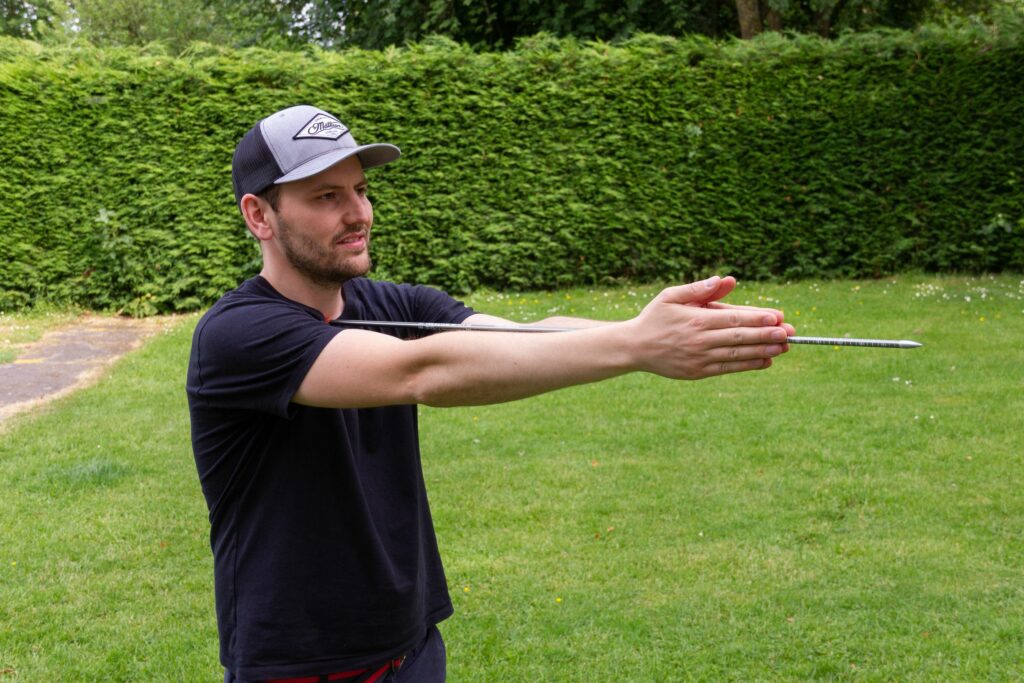
A very pragmatic method, but it does what it is supposed to. For example, place a long arrow shaft (stick, measuring stick, etc.) on the breastbone just below the neck and stretch your arms and hands along the shaft straight forward. Mark on the arrow the place where the tip of your longest finger rests. The value, probably measured in centimeters, is then to be understood as the draw length. To be on the safe side, we would recommend adding 1-1.5 inches to this technique to make sure the arrow is not too short. If you have determined this value with a scale in cm, then you would have to divide this value by 2.54, for getting the desired value in inches.
Determine Draw Length With the bow
3. The Draw Length Indicator Arrow
The safest method of measuring the draw length will probably be the draw length indicator arrow. As the name implies, this is a long arrow placeholder with a nock that is used like a real arrow in the shooting process without, of course, releasing the arrow. Archers must then perform the movement of the shooting technique until they reach the anchor position and stop there until someone else read the appropriate value from the measuring arrow. The arrow has an inch/inch scale printed on it so that another person – or perhaps yourself through a camera – can see how long the draw length is. Unfortunately you can’t use this method alone, or without the aid of technical devices. The measuring arrow is 35″ long, so it’s long enough that even the tallest people won’t fall off the support. For the DIY-Friends among you, this measuring arrow is surely something to rebuild quickly. The draw length indicator arrow, however, simply is: fast and precise.

How Long Needs the Arrow to be?
In clubs and various training courses, the specification of the draw length is often simply passed on as a formula. But rarely it is explained where this rule actually derives from.
The specification in inches may have already revealed the fact that we have to look at the US-American region for more information. The definition of the correct draw length goes back to the AMO (abbreviation for Archery Manufacturers Organization), a U.S. manufacturer and dealer organization and direct predecessor organization of the ATA (abbreviation for Archery Trade Association), which published a booklet (AMO Standards) for this purpose in February 1968 for all other standards applicable in archery, or archery construction, which are still canon today.
„The draw length is the distance at full draw of the archer from the base of the nocking point (i.e., where the nock docks on the string) to the deepest point in the grip (also called the pivot point) of the bow grip plus 1 ¾ inches . The draw length to the pivot point is called the DLPP (Draw Length Pivot Point) and is considered the „true draw length“ by the AMO.
As an example, they give the following calculation: 26¼ inches DLPP plus 1¾ inches equals 28″ draw length.“
For beginners, as a coach in clubs for example, you would add another 1-2 inches or so at this point (depending on how experienced the shooter already is) to prevent the arrow from becoming too short in the worst case scenario.
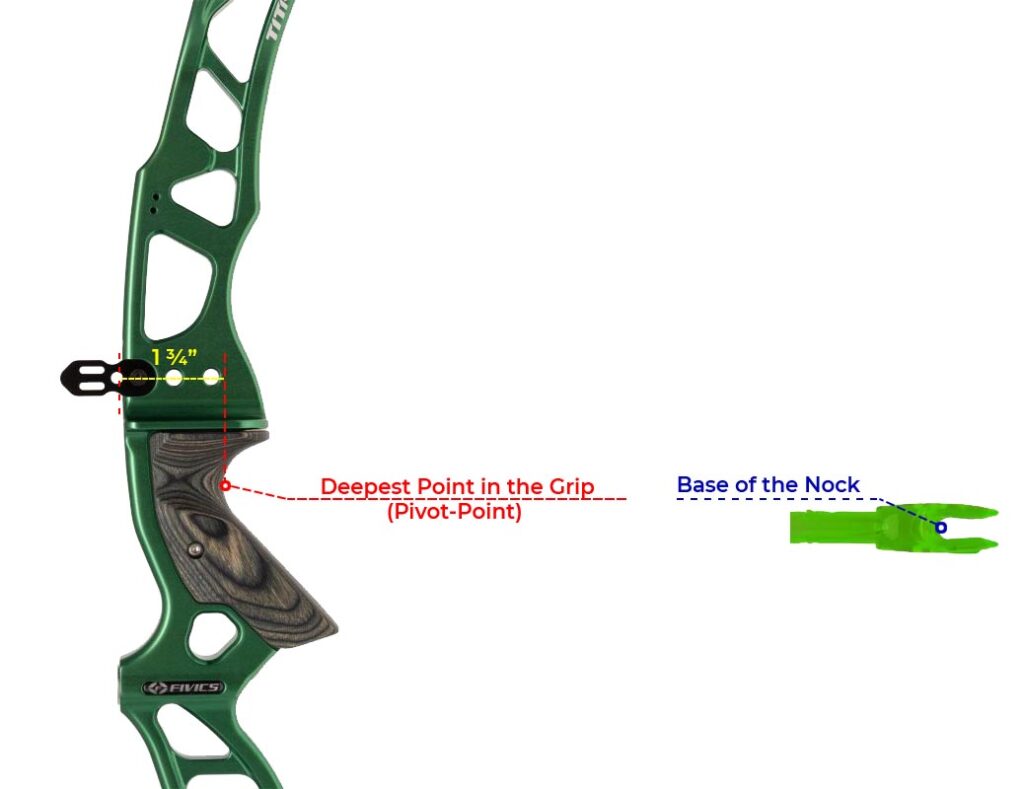
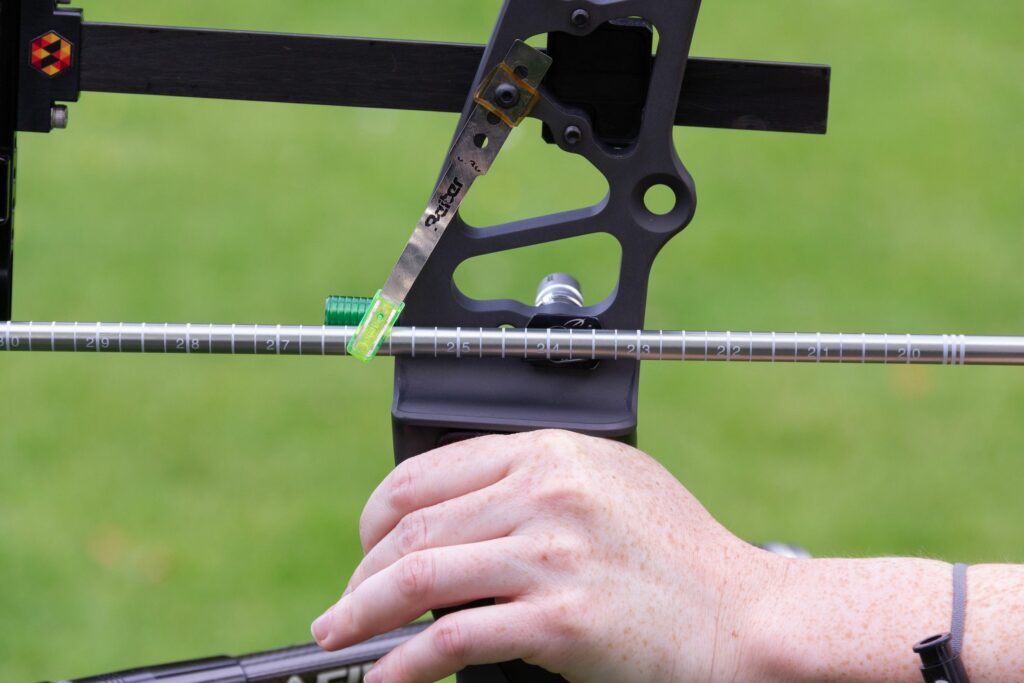
…and what about compound archers?
The situation is somewhat different with the compound archers. The compound bow cannot be extended at will, but has a fixed extension length due to the wall. This in turn means that archers must buy their compound bow with the required extension length to begin with. The method with the measuring arrow would not even work here. The methods without a bow are primarily required.
Of course, in addition to these two methods, there is also the possibility of buying appropriate beginner compound bows. These have rotatable modules on the cams. This means that you can directly adjust the extension length of the bow at the modules. For those who have never seen such a bow, here is an example with the Bear Cruzer G2.
Especially for beginners, such starter bow is not wrong, because unlike recurve archers, for example, you can thus gradually pull out the bow with different adjustments and ask for assistance ideally from an experienced archer, or coach, who could judge by looking at your posture which draw length would be best for you.
Note: Before buying one of these bows, however, it is never wrong to first perform one of the measurement methods without a bow, so that you have at least a rough reference. Because these adjustable compound bows have a limit, which is always indicated in our shop. I.e. bows that do not allow a longer draw than e.g. 30″ do not even need to be considered with a determined draw length of 32″.
We’ll share a little more on determining the proper draw length for compound archers on our blog soon! Stay tuned!

